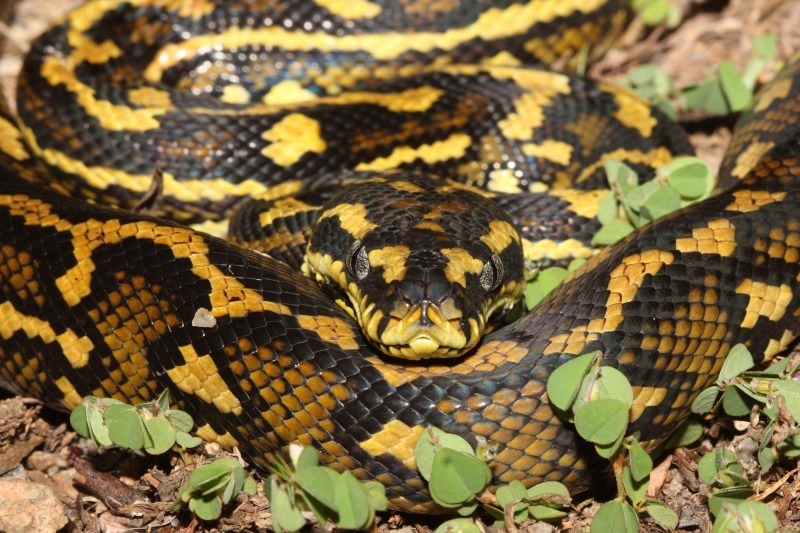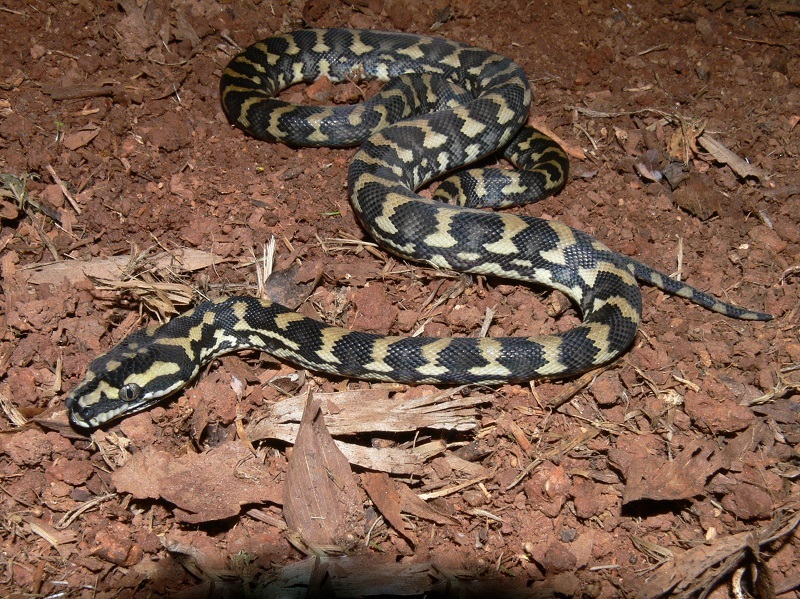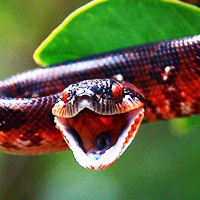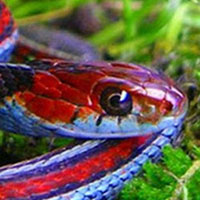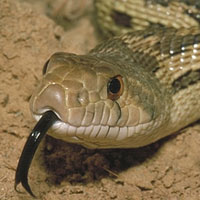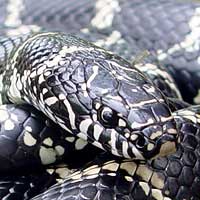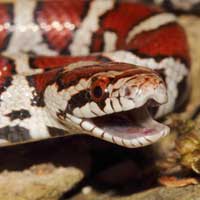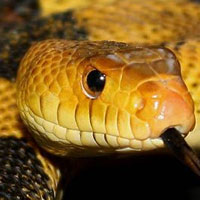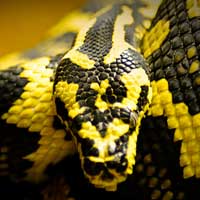Everything You Need to Know About the Jungle Carpet Python
The scientific name of the Jungle Carpet Python is Morelia spilota cheynei, and it belongs to the Pythonidae family, which comprises non-venomous constricting snakes commonly referred to as pythons.
Scientific Name: Morelia spilota cheynei
Snake Family: Pythonidae
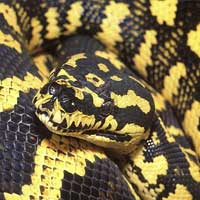
Introduction to the Jungle Carpet Python
The Jungle Carpet Python (Morelia spilota cheynei) is a striking subspecies of the Carpet Python, renowned for its vivid black and gold coloration. Native to the tropical rainforests of Australia, this non-venomous constrictor is a favorite among snake enthusiasts due to its manageable size and impressive appearance. In this guide, we delve into the Jungle Carpet Python’s habitat, diet, behavior, and care needs, providing a comprehensive resource for current and prospective keepers.
The Natural Habitat of the Jungle Carpet Python
The Jungle Carpet Python thrives in the lush rainforests of northeastern Queensland, Australia. Its natural environment provides the perfect conditions for its arboreal and terrestrial habits.
- Geographic Range: Restricted to northeastern Queensland in Australia.
- Preferred Habitat: Tropical rainforests, woodlands, and coastal regions.
- Climate: Warm and humid, with temperatures ranging from 75°F to 88°F.
| Region | Habitat Type | Key Features |
|---|---|---|
| Northeastern Queensland | Rainforests | Dense foliage, high humidity |
| Woodlands | Scattered trees | Moderate vegetation |
| Coastal Regions | Mangroves | Wet, tropical conditions |
Diet and Feeding Habits of the Jungle Carpet Python
The Jungle Carpet Python is a carnivorous species with a diet that reflects its predatory nature. In captivity, its feeding needs are straightforward to manage with proper planning.
- Natural Diet: Small mammals, birds, and reptiles.
- Feeding Frequency:
- Juveniles: Every 5-7 days for growth.
- Adults: Every 10-14 days depending on size and activity level.
- Captive Feeding Tips:
- Offer pre-killed, thawed rodents for safety.
- Feed at night to mimic natural hunting behavior.
- Monitor feeding habits to prevent overfeeding or obesity.
Behavior and Temperament of the Jungle Carpet Python
The Jungle Carpet Python is known for its calm demeanor and adaptability. However, its arboreal nature and occasional defensiveness require understanding and respect.
- Activity Patterns: Primarily nocturnal, hunting and exploring at night.
- Defensive Behavior: Can be defensive when young but becomes calmer with regular handling.
- Interaction with Humans: Tolerates handling well when acclimated properly.
With consistent handling and care, the Jungle Carpet Python can become a docile and rewarding pet.
Health and Lifespan of the Jungle Carpet Python
The Jungle Carpet Python can live 20-30 years in captivity with proper care. Ensuring their health involves maintaining optimal environmental conditions and a balanced diet.
- Common Health Issues:
- Respiratory infections caused by improper humidity or temperatures.
- Shedding problems due to insufficient humidity.
- Parasitic infestations such as mites or ticks.
- Preventive Measures:
- Maintain humidity levels between 50-70%.
- Provide a temperature gradient with a basking spot of 88°F-92°F.
- Keep the enclosure clean and conduct regular health checks.
Reproduction and Breeding of the Jungle Carpet Python
The Jungle Carpet Python is oviparous, laying eggs during the breeding season. Successful breeding in captivity requires careful environmental management.
- Mating Season: Late winter to early spring.
- Clutch Size: 10-20 eggs per clutch.
- Incubation Period: 60-70 days at temperatures of 86°F-88°F.
- Breeding Tips:
- Simulate seasonal changes to trigger breeding behavior.
- Provide a suitable nesting box with moist substrate for egg-laying.
- Monitor temperature and humidity closely during incubation.
Handling and Caring for a Jungle Carpet Python
Handling and caring for a Jungle Carpet Python requires dedication and understanding. With proper care, this species can thrive and become a fascinating addition to any collection.
- Enclosure Requirements:
- Minimum size: 4’ x 2’ x 2’ for adults.
- Include climbing branches and secure hiding spots.
- Maintain a temperature gradient for thermoregulation.
- Handling Tips:
- Handle gently and support the snake’s entire body.
- Avoid handling during shedding or immediately after feeding.
- Wash hands before and after handling to ensure hygiene.
By meeting their specific needs, the Jungle Carpet Python can provide years of enjoyment and fascination for its keeper.
Other Snakes In This Species
 Amethystine Python
Amethystine Python Ball Python
Ball Python Black-Headed Python
Black-Headed Python Boelens Python
Boelens Python Borneo Blood Python
Borneo Blood Python Burmese Python
Burmese Python Burrowing Python
Burrowing Python Centralian Python
Centralian Python Childrens Python
Childrens Python Coastal Carpet Python
Coastal Carpet Python Diamond Python
Diamond Python Green Tree Python
Green Tree Python Indian Python
Indian Python Inland Carpet Python
Inland Carpet Python Jungle Carpet Python
Jungle Carpet Python Macklots Python
Macklots Python Malaysian Blood Python
Malaysian Blood Python Olive Python
Olive Python Pygmy Python
Pygmy Python Reticulated Python
Reticulated Python Ringed Python
Ringed Python Rock Python
Rock Python Rough Scaled Python
Rough Scaled Python Spotted Python
Spotted Python Sumatran Blood Python
Sumatran Blood Python Timor Python
Timor Python White Lipped Python
White Lipped Python


